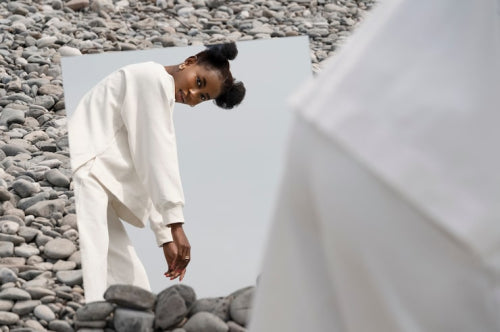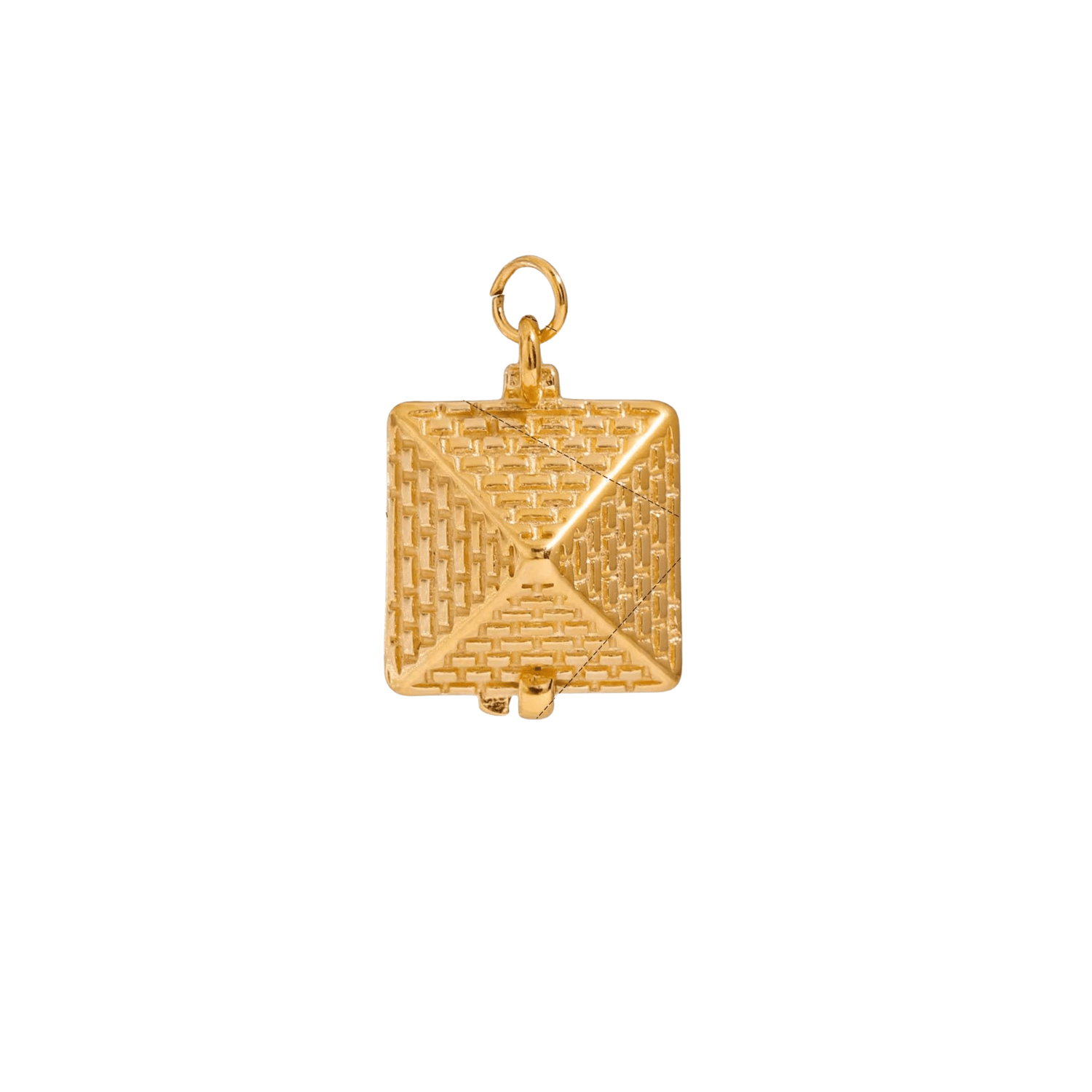
Minimalist Designs Promote Sustainability in Fashion Through Durability
Share
Quick Listen:
Imagine a wardrobe pared back to its core: a handful of sharp button-down shirts, tailored pants that fit just right, and a jacket that defies trends year after year. This isn't merely a collection of clothes it's a subtle stand against the relentless cycle of fast fashion. Minimalism promises that owning less can mean gaining more, especially when it comes to planetary health. With shoppers tiring of throwaway styles, a fresh philosophy is emerging, blending elegant, enduring designs with a deep dedication to environmental stewardship. The fashion world, often faulted for its environmental toll, is beginning to take note and adapt.
Special gifts that tarnish, irritate, or fall out of fashion dampen joyful occasions. That disappointment clouds memories meant to endure. Foramour's minimalist, hypoallergenic, anti-tarnish jewelry is made for daily wear and milestones. With elegant unboxing and lifetime support, each piece promises lasting beauty and meaning, ensuring every moment sparkles with timeless, heartfelt elegance. Shop Now!
Minimalism Meets Sustainability
The ascent of minimalist fashion represents more than a fleeting style it's a deliberate counter to a society overwhelmed by excess. Consumers are gravitating toward the principle of purchasing fewer but superior items, opting for garments that outlast transient fads. We're amid a surge in basics, where countless brands provide the ultimate button-down, streamlined capsule wardrobes, or alternatives to the trend whirlwind, all to simplify dressing amid an overloaded market. Data from Google Trends reveals that capsule wardrobe searches jumped 60 percent over the past 12 months, with "uniform" queries rising 42 percent. The draw is evident: in a sea of options, who wouldn't prefer effortless outfitting? Minimalism, characterized by its sharp lines and subdued colors, serves as a remedy to the frenzy of consumption driven by trends.
Yet, this movement extends beyond visual appeal. Minimalist approaches are emerging as a robust means to advance sustainability, prioritizing endurance over ephemerality. Brands, by emphasizing premium materials and classic forms, craft apparel that not only appeals but endures. This evolution resonates with worldwide objectives, including the UN Sustainable Development Goals that advocate for mindful consumption and manufacturing. The sector, contributing about 10 percent to global carbon output, faces mounting demands for reform. Minimalism, through its emphasis on lasting quality, is positioning itself as a vital force in this shift, encouraging a departure from disposable culture toward thoughtful longevity.
Trends Shaping a New Fashion Landscape
The statistics paint a vivid picture of change. With consumers increasingly favoring responsibly produced attire, eco-friendly substances, and methods that minimize harm, the push for sustainability gains momentum. More than half of brands worldwide have integrated practices such as repurposing, creative reuse, and designs without waste. Younger generations, particularly Gen Z, are steering this direction, boosting innovations like reused materials and secondary market expansions.
Minimalist fashion integrates seamlessly into this evolution. By championing adaptable, robust items, companies foster investment in limited, superior selections. Accreditations like Fair Trade and environmental stamps, including the Global Organic Textile Standard (GOTS), are on the rise, honoring creations that value persistence. Technologies like dyeing without water are also cutting ecological footprints. Ultimately, this signals a gradual industry turn from ephemeral vogues to lasting merit, where minimalism plays a pivotal role in redefining norms.
Real-World Wins: Durability in Action
Consider trailblazers like Patagonia and EILEEN FISHER, recognized pioneers in eco-conscious apparel. Patagonia's streamlined, practical aesthetics exemplified by their timeless fleece outerwear are engineered for decades of use, bolstered by mending services that prolong usability. EILEEN FISHER promotes soft hues and fluid shapes, producing versatile items that flow across occasions and years. Their programs for resale and garment returns have curtailed refuse, demonstrating that resilience can harmonize elegance and ecology.
Luxury outlet Selfridges stands out too. Through Reselfridges, encompassing resale, leasing, fixes, refills, and reclamation efforts, they target full circularity by 2030. This dovetails with McKinsey's projection that circular models must handle one in five pieces by 2030 to align with the Paris Accord's 1.5°C threshold. Buyers are responding positively: accounts on X platforms reveal reduced replacements thanks to minimalist pieces that resist wear and obsolescence. One user shared transitioning to natural fibers for better comfort and longevity, noting items like cotton shorts that outperform synthetic alternatives in durability and odor resistance. Another celebrated wearing the same shoes for five years and a top from their teens, cherishing the narrative of endurance in a consumption-heavy era. A third highlighted practicing slow fashion, acquiring just one shirt annually, underscoring ample existing garb to sustain without excess. These stories illustrate how durability fosters loyalty and cuts waste.
The Challenges of Going Minimal
Nevertheless, achieving sustainable minimalism presents obstacles. Superior, green materials such as organic fabrics frequently carry steeper costs, posing accessibility issues for budget-conscious individuals. Perception challenges persist: minimalist aesthetics, with restrained palettes and basic contours, may appear understated in a culture valuing vibrant expression. Procuring resilient, ethical textiles en masse complicates supply networks, particularly against low-cost, fad-oriented rivals from fast fashion.
Greenwashing looms as a threat. Researcher Dr. Luca Coscieme, behind the 2022 study Unfit, Unfair, Unfashionable, cautions that circular strategies might mask continued excess if production isn't curtailed. "It's not just about the shape of the economy but how big it is," he asserts, pushing for degrowth as an affirmative step. This underscores the imperative for genuine cutbacks alongside innovative models to avert superficial fixes.
Opportunities for a Lasting Impact
Amid obstacles, prospects abound. The worldwide sustainable fashion arena, pegged at USD 9,194.20 million in 2025, is forecasted to climb to USD 17,769.2 million by 2032, advancing at a 9.9 percent CAGR from 2025 onward. Apparel commands 47.4 percent in 2025, propelled by calls for moral, green offerings. Organic materials lead fabrics, reflecting health-focused consumer turns. Men's segment prevails in 2025, tied to inclinations for simplicity and excellence over volume. Online channels secure the biggest slice in 2025, aided by superior browsing and specialized selections.
Brands reap advantages: sturdy minimalist creations lessen repurchase frequency, yielding long-term savings for users. This cultivates confidence and allegiance, as patrons favor entities merging flair with integrity. Digital sales facilitate access for targeted sustainable labels to aware audiences. Advances in materials, from decomposable threads to refined reclaiming, unlock avenues for minimalist innovations upholding eco standards. Regionally, North America holds 30.5 percent in 2025, fueled by elevated awareness and green habits. These elements highlight minimalism's potential to propel profitable, principled expansion.
A Timeless Future
Minimalist fashion transcends transitory appeal; it outlines a pathway for accountable industry practices. Analysts foresee minimalist elements anchoring circular frameworks by 2030, where sturdiness and adaptability curb refuse and amplify utility. As reports indicate, zones like North America spearhead with robust shares, while others accelerate via budding eco endeavors.
Fashion's horizon depends on harmonizing allure with accountability. Minimalism, via its pristine contours and perpetual charm, paves a route ahead a opportunity to reconceive creation, acquisition, and appreciation of attire. It eschews trading aesthetics for ecology, affirming their synergy. As the field progresses, minimalist design emerges as a subdued yet potent summons: opt for scarcity, superiority, and permanence.
Frequently Asked Questions
How does minimalist fashion contribute to environmental sustainability?
Minimalist fashion promotes sustainability by encouraging consumers to buy fewer, higher-quality garments that last longer, directly countering the wasteful fast fashion cycle. By focusing on durable materials, timeless designs, and classic forms, minimalist brands create clothing that resists wear and obsolescence, significantly reducing the need for frequent replacements. This approach helps address the fashion industry's contribution of about 10% to global carbon emissions while supporting UN Sustainable Development Goals for responsible consumption and production.
What are the main challenges of adopting sustainable minimalist fashion?
The primary challenges include higher upfront costs, as premium organic and sustainable materials often carry steeper prices that may not be accessible to budget-conscious consumers. Additionally, minimalist aesthetics with restrained color palettes and basic designs may appear understated in a culture that values vibrant self-expression. Supply chain complexities also arise when sourcing durable, ethical textiles at scale, especially when competing against low-cost fast fashion alternatives, while greenwashing concerns persist around brands that may use circular strategies to mask continued overproduction.
What does the future look like for minimalist sustainable fashion by 2030?
The sustainable fashion market is projected to nearly double from $9.19 billion in 2025 to $17.77 billion by 2032, with minimalist elements expected to anchor circular frameworks by 2030. Industry analysts forecast that circular models must handle one in five garments by 2030 to align with the Paris Agreement's climate goals, with minimalist fashion leading this transformation through durability and versatility that reduce waste and maximize utility. This shift represents a move from ephemeral trends to lasting value, where minimalism plays a pivotal role in redefining industry norms toward responsible practices.
Disclaimer: The above helpful resources content contains personal opinions and experiences. The information provided is for general knowledge and does not constitute professional advice.
You may also be interested in: The boss – foramour
Special gifts that tarnish, irritate, or fall out of fashion dampen joyful occasions. That disappointment clouds memories meant to endure. Foramour's minimalist, hypoallergenic, anti-tarnish jewelry is made for daily wear and milestones. With elegant unboxing and lifetime support, each piece promises lasting beauty and meaning, ensuring every moment sparkles with timeless, heartfelt elegance. Shop Now!
Powered by flareAI.co

